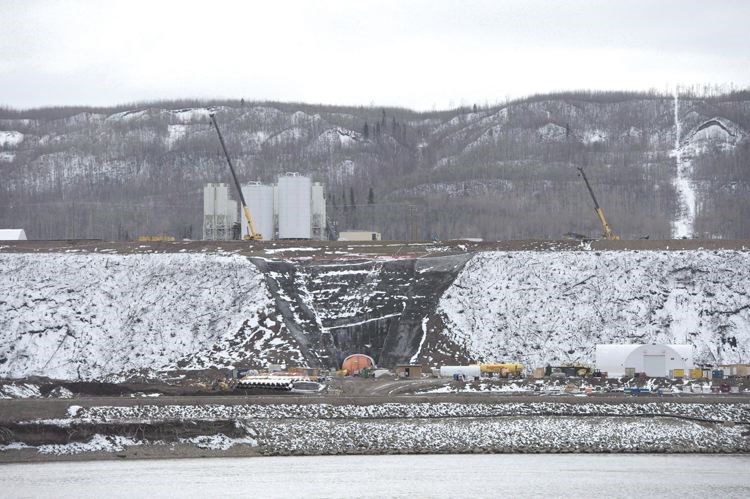On Dec. 11, Premier John Horgan announced the NDP government would proceed with the Site C hydroelectric dam on the Peace River.
Horgan said the province had no choice to continue the project, now pegged at $10.7 billion, rather than write off $4 billion to cancel the project. The provincial government also risked a credit rating downgrade, $150 million in annual debt servicing costs and a 12 per cent BC Hydro rate hike over 10 years if the project was cancelled.
"We have listened," Horgan said on Dec. 11. "We have deliberated and we have debated and at the end of the day we have come to the conclusion that although Site C is not the project we would have favoured, and it's not the project we would have started, it must be completed to meet the objectives of our government."
According to BC Hydro the 1,100 megawatt-capacity dam will generate approximately 5,100 gigawatt hours of electricity per year - enough to power about 450,000 homes.
Former Liberal premier Christy Clark approved the Site C project in December 2014.
"They gave us, sadly, just one clear choice," Horgan said. "That was to proceed with a $10.7 billion project or cancel a project and absorb $4 billion in construction and remediation costs."
Local MLAs Shirley Bond and Mike Morris said Horgan made the right call to continue the project their Liberal government started.
"The premier said it was a tough decision. That was of their own doing," Morris said on Dec. 11. "The tough decision was made by us when we were in government in 2014 to go ahead with that after weighing all the options."
Bond said the dam is the "most reviewed project in B.C. history."
"I'm very relieved for the families who are currently employed at Site C," Bond said.
"From my perspective, the biggest benefit is a hundred years of clean, firm power. And that allows us to grow the economy, to create jobs and do all the things that British Columbians are so accustomed to doing."
However, the legal wrangling over the dam project has not ended. The project has been the subject of intense opposition from some First Nations, area land owners, environmental groups and the B.C. Green Party.
In a press release, National Chief Perry Bellegarde of the Assembly of First Nations said "I am confident that First Nations will continue their efforts to stop Site C and the next step will be legal challenges."
Earlier this month the West Moberly and Prophet River First Nations announced they will seek a court injunction to stop the dam project and launch a treaty infringement lawsuit against the provincial government.
"It sets a pretty strong tone from them," West Moberly Chief Roland Willson told the Alaska Highway News on Dec. 11. "We were hoping things would be different and it's just the same old, same old."
Green Leader Andrew Weaver said the cost of the project has continued to rise since BC Hydro estimated the cost at $5 billion and $6.6 billion in 2007.
"Today, it's $10.7 billion projected cost," Weaver said on Dec. 11. "So, who believes the $10.7 billion? I certainly don't."
The Site C location was first identified by BC Hydro in 1958, as a potential third dam on the Peace River.
The dam's reservoir will flood an approximately 5,500 hectares of land along an 83-kilometre stretch of the river near Fort St. John, according to BC Hydro's environmental impact statement. A total of 20 families would be displaced.
-- With files from Canadian Press writer Dirk Meissner and the Alaska Highway News



